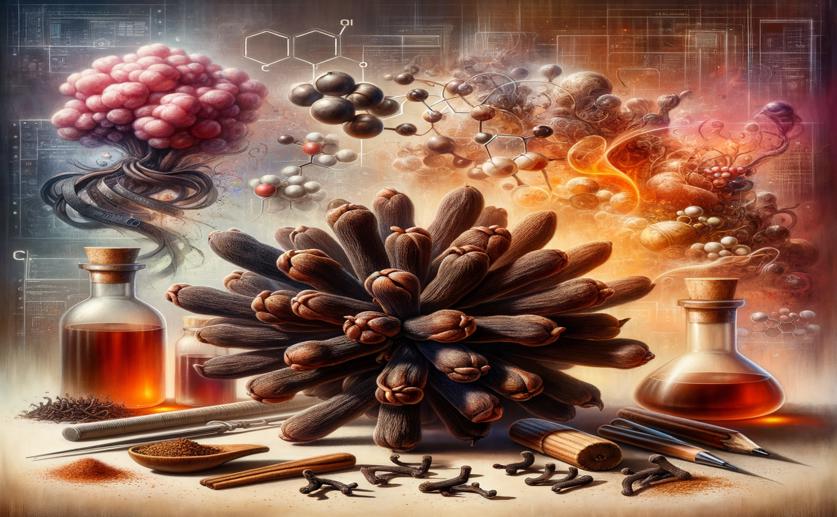
How Clove Extracts Fight Parasites Using Advanced Computer Simulations
Jenn Hoskins
19th August, 2024

Image Source: Natural Science News, 2024
Key Findings
- Researchers at King Abdulaziz University identified potential drug molecules targeting the LDH protein of Cryptosporidium parvum
- Four phytochemicals from clove—Gallotannin 23, Eugeniin, Strictinin, and Ellagitannin—showed strong binding affinity and stability with the LDH protein
- Gallotannin 23 and Ellagitannin exhibited the highest binding affinity and stability, making them promising candidates for new drug development against C. parvum
References
Main Study
1) Exploring the Anti-Protozoal Mechanisms of Syzygium aromaticum Phytochemicals Targeting Cryptosporidium parvum Lactate Dehydrogenase Through Molecular Dynamics Simulations.
Published 16th August, 2024
https://doi.org/10.1016/j.abb.2024.110124
Related Studies
2) Cryptosporidium Infection: Epidemiology, Pathogenesis, and Differential Diagnosis.
3) Cryptosporidiosis-an overview.
Journal: Journal of biomedical research, Issue: Vol 25, Issue 1, Jan 2012



 31st July, 2024 | Jenn Hoskins
31st July, 2024 | Jenn Hoskins